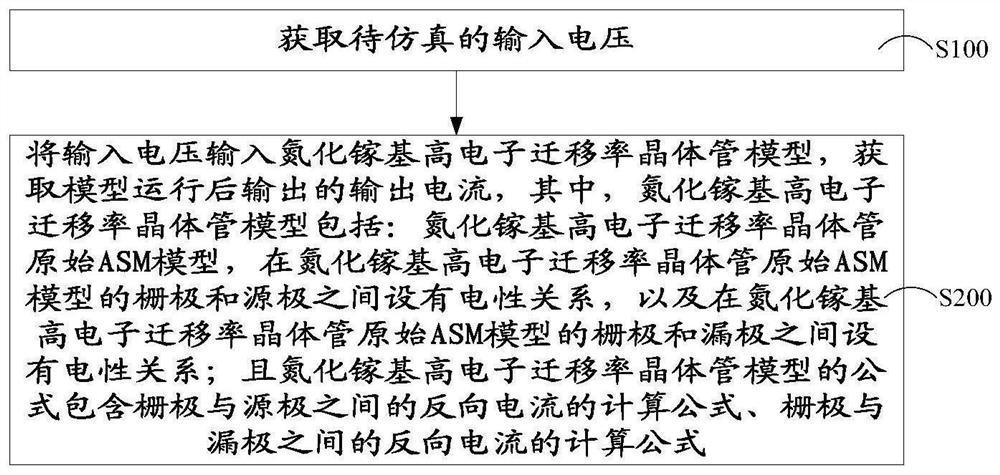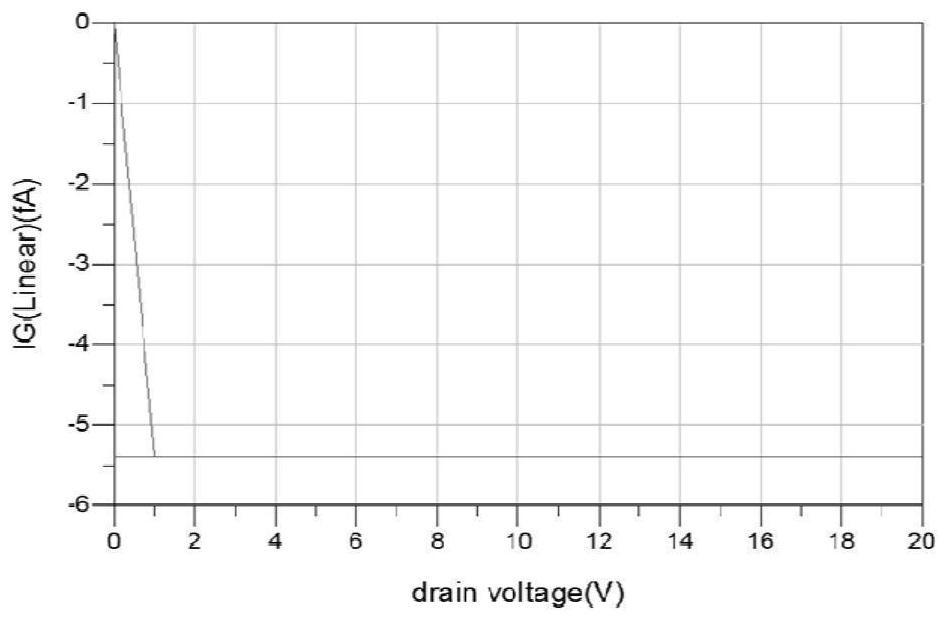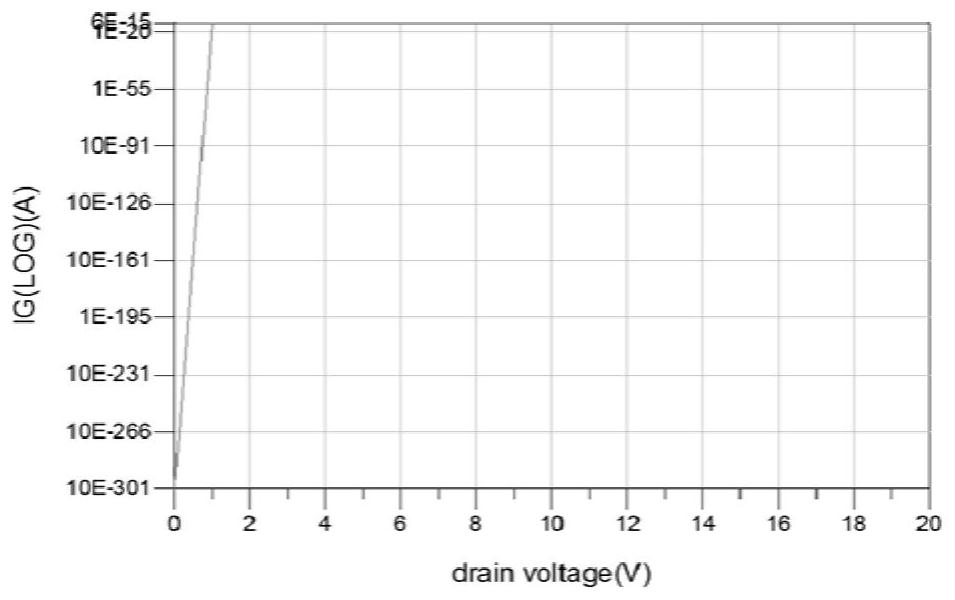Gallium nitride-based high-electron-mobility transistor simulation method and device and storage medium
A high electron mobility, gallium nitride-based technology, applied in the field of semiconductor device simulation, can solve the problems of missing gate reverse current, affecting the model DC and accurate description of large signals, etc.
- Summary
- Abstract
- Description
- Claims
- Application Information
AI Technical Summary
Problems solved by technology
Method used
Image
Examples
no. 1 example
[0035] Please refer to figure 1 , this embodiment provides a simulation method for a gallium nitride-based high electron mobility transistor, and the simulation method for a gallium nitride-based high electron mobility transistor includes the following steps:
[0036] S100. Acquire an input voltage to be simulated.
[0037] It should be noted that the simulation method for GaN-based high electron mobility transistors provided in this embodiment is applied to an intensive model of advanced high electron mobility field effect transistors.
[0038] In addition, those skilled in the art can select the input voltage to be simulated based on the parameters of the gallium nitride-based high electron mobility transistor to be designed. For example, in this embodiment, the above input voltage is the port voltage of the transistor. Wherein, the port voltages respectively include the port voltages of the gate, the source, and the drain.
[0039] S200. Input the input voltage into the G...
no. 2 example
[0092] Compared with the first embodiment, this embodiment differs in that different formulas are used to calculate the reverse current between the gate and the source and the reverse current between the gate and the drain.
[0093] As an example, in this embodiment, the following calculation formula can be used to calculate the reverse current between the gate and the source:
[0094]
[0095] Among them, I gsr is the reverse current between gate and source, C is the first model coefficient, μ is the carrier diffusion mobility, V gs is the voltage across the gate and source, β is the second model coefficient, and PFC is the correction factor. It should be noted that, in this embodiment, the involved parameters C, μ, β, and PFC are all parameters in an existing model (ie, the original ASM model).
[0096] Correspondingly, the correction factor PFC in the above formula can be calculated by the following formula:
[0097]
[0098] Among them, ψ d is the height of the p...
PUM
 Login to View More
Login to View More Abstract
Description
Claims
Application Information
 Login to View More
Login to View More - R&D
- Intellectual Property
- Life Sciences
- Materials
- Tech Scout
- Unparalleled Data Quality
- Higher Quality Content
- 60% Fewer Hallucinations
Browse by: Latest US Patents, China's latest patents, Technical Efficacy Thesaurus, Application Domain, Technology Topic, Popular Technical Reports.
© 2025 PatSnap. All rights reserved.Legal|Privacy policy|Modern Slavery Act Transparency Statement|Sitemap|About US| Contact US: help@patsnap.com



